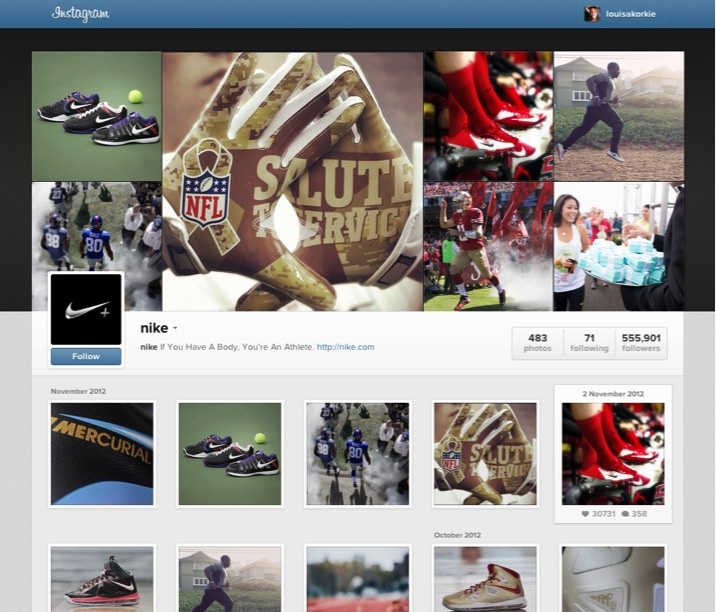
by Marianna Muscat | Jan 22, 2013 | Social Networking
This week, embattled social media network Myspace took the wraps off its revamped network. But unfortunately for the former social media heavy-weight, the launch of the new Myspace was largely overshadowed by the announcement of Facebook’s new search engine, Social Graph. Many sceptics are wondering whether Myspace will ever enjoy mainstream use again.
Back in the early 2000s, Myspace was an incredibly popular social network among young people and music enthusiasts. At the height of the network’s success, it was sold for $580 million. Since then it all but disappeared into oblivion. Now, new investors, including Justin Timberlake, are hoping the network can make a comeback.
My Space or Justin Timberlake’s space?
As if the overshadowing of Myspace’s relaunch by the release of Facebook’s Social Graph was not enough, Timberlake (one of the network’s investors) did some overshadowing of his own.
Upon visiting the site, users were greeted with large picture of Timberlake. Following the login or sign up process, visitors were again greeted with Timberlake’s face. Big captions across the site’s pages also made mention of Timberlake’s new single, “Suit & Tie”.

The move drew a lot of criticism on social network Twitter and news sites, including this humorous response. Many users also complained that they were unable to connect with friends through a search feature, although they could connect with strangers. While many features are still reportedly in development, connecting with friends seems an obvious and essential feature for a social network.
Myspace may have done better to wait until all the technical kinks were ironed out before launching the revamped site, instead of compromising usability in order to coincide with Timberlake’s new single. Despite the criticism, the new Myspace has been praised for its cleaner interface, intuitive design and a welcome lack of advertising.
Focused on music discovery
As mentioned earlier, many people have questioned the ability of Myspace to gain traction with users, given the social network’s fall from glory and the number of social networks competing for user time. However, MySpace COO Chris Vanderhook has insisted in the past that Myspace is not hoping to compete with the likes of Twitter and Facebook, and that the network is focused on music discovery.The question then, is whether Myspace will be able to position itself as network to discover new music, competing with the likes of Spotify and iTunes.
Before people dismiss Myspace, they should remember that new social networks continue to achieve success (take a look at Pinterest for example), while the existence of Flickr did not stop the success of Instagram.
Many youngsters are also completely unfamiliar with the old Myspace, presenting a great opportunity for the revamped network if it can catch the attention of this new generation. This should not be too difficult given that the network is focused on connecting musicians with their fan base and today’s young generation is obsessed with fame and sharing their experiences.
If Myspace is able to drive music discovery, it may well achieve success. Of course, the folks at Myspace will need to address technical hiccups on the site and Justin Timberlake will need to take a back seat.
WSI is an experienced Internet marketing company that can help you develop a social media strategy that drives engagement with your target audience.
To learn more about how WSI can help you increase your social media presence, contact us today!

by Marelise da Silva | Nov 7, 2012 | Social Networking
Instagram, the free photo-sharing social network, announced that they will be introducing profiles on the web.
Up to now you could only view profiles from within the app on Android and Apple devices. There is no need to claim your vanity URL, your Instagram URL will read as instagram.com/yourusername. The public profile will show your profile image, bio, statistics as well as a live collage with your most recent Instagrams. If you have set your photo’s to public they will be visible to anyone on the web whereas private photo’s will require a login.
Features of Instagram web profiles:
- Vanity URLS determined by your username
- Follow users, like and comment on photos directly from the web
- Edit your Instagram profile online
- Easily share your profile online
- Photo’s set to public will be visible to anyone
- Live banner image with your recent photos
Nike’s Instagram web profile:

Instagram web profiles gives users a way to easily drive traffic to their profiles by sharing their photo’s and profiles on social media platforms such as Twitter or Pinterest. Organisations using Instagram will also be delighted that they can now share their snapshots with anyone on the web, not just Instagram users.
In their blog earlier this week, Instagram has noted that you will not be able to add photo’s via the web as they are still focused on photo sharing from mobile devices. If you are an Instagram user you should be receiving your web profile within a few days, in the mean time, why not check out Nike’s (@nike) web profile.
If you are not on Instagram yet, now might be the time to sign up. Teaming up Pinterest and Instagram web profiles will make for powerful visual social media tools. Need help with your social media? Contact WSI OMS.

by Francois Muscat | Jul 6, 2012 | Blogging, Social Networking
Content curation is a great way to become the go-to person for industry news. Many brands have now implemented content curation strategies so that they get to choose and share the best industry news with their followers.
What makes content curation so attractive is the fact that you don’t have to produce every single piece of content yourself – you’re basically scouting the web and gathering the best pieces of news. Other advantages include being able to create a following for your social media accounts and be seen as a thought leader for providing a platform to spread interesting content.
If you’re considering a content curation system, follow in the footsteps of the pros by implementing these best practices:
- Create and curate
Some of the most successful content curators, such as the Huffington Post, also create some of their own content. There are already many content curators, so set yourself apart by creating some of your own content to add to the existing content you find online.
- Be consistent
Readers like to know when they can expect new content and posts. You don’t have to commit to a schedule you can’t keep up with (many sites have “Daily News”, but you need to create something that’s workable for you). Whatever schedule you decide on, make sure you’re consistent so that readers can start anticipating your news.
- Find many sources
The best content curators don’t only browse TED for cool videos or re-post Tweets from the same users – they are part of the content ecosystem and are able to find interesting, relevant content on multiple platforms. Keep up with your beat by finding information on Tumblr, Pinterest, Facebook, the blogosphere and other places in order to give your readers the best information.

by Marianna Muscat | Apr 11, 2012 | Social Networking
Social media”best practices” change constantly. And to expect that the entire organisation will be equipped with the knowledge to appropriately participate would be, in most cases, incorrect. Companies must assess the”must dos” to share with employees such as compliance and ethical considerations, and they also, increasingly, need to keep employees inspired by refreshing them with new ideas and best practices in the social space.
Train for social media etiquette
Decide what your company feels are the best ways to communicate in social media. This may be always responding within a certain time frame, only responding to questions that can be answered publicly or even teaching employees how to use the most popular channels for maximum impact. When more people become involved in social media activity, more personalities and communication
- Styles become representative of your brand. Equip these people with the proper ways to speak and respond on social channels, as well as the expectations and preferences of your online networks.
- Train for social media business goals
- This may sound self-serving, but the communication of various internal teams should, when appropriate, tie back to the roles and goals they have as employees. The sales team should not be responding to members of the media asking questions about corporate news, and the HR team should not try to answer product or service inquiries. Defining the ways that each group can best help further business goals while also helping to communicate with networks to create positive experiences helps both your company and your networks.
Social Media Training
- Provide company guidelines and etiquette
- Identify business goals and manage the process
- Webinars, classes, best practices, communication tech training and adopting Social Media practices Company-Wide, use industry experts to provide up to date training on an ongoing basis
Next steps:
- Is your company ready, culturally, to expand social media into all parts of the business?
- Who are the internal teams that should be using social media?
- Who is/are the best people to serve as internal stakeholders for training and guidance?
- A huge aspect of rolling out social media across the enterprise entails being able to manage this activity in a coordinated way. For most companies, this means having the tools and systems to scale activity. Using a social media management dashboard offers the opportunity to be efficient – but it also means employees must know how to use the technology effectively to do their jobs, alternatively outsource your social media marketing in order to entrench the processes whilst creating a ‘test and learn’ culture within your business.

by Marianna Muscat | Apr 4, 2012 | Social Networking
One of the biggest challenges for many companies is properly organizing teams to engage in social media beyond one department. Moving beyond one team who coordinates all social activity can get messy, fast. There is no one, single way to properly organize company activity in social. Rather, this should be personalised by taking into account the people, business goals and levels of activity and responsibility of different business units.
Start by thinking through preliminary aspects of people, permission and process:
- Decide which departments will be active in social media
- Find the key stakeholders on each team who can serve as the ”lead” in helping to manage and triage social media activity for their area
- List the people on each team, beyond the stakeholders, who will be expected to engage regularly
- Identify what level participating employees should be active and identify the roles for each of these people. For example: the team lead may be in charge of the strategy and administering the accounts (the administrators), where others may be in charge of managing day to day activity (Social Responsibility Manager) and others may be responsible for sharing and creating content to provide to the manager (editors).
- Identify the goals of each team and make these success milestones part of their ongoing performance metrics
- Outline the levels of communication that need to take place across social activity and create a plan for engagement and response.
- For example, simple content creation and sharing may be Level 1. Level 2 may be simple responses to questions and requests. Whereas Level 3 may be answering complex questions or require a higher level of thought or collaboration for response. Each of these should be mapped for the appropriate process to take place alternately you can outsource ‘Community management’ until you are comfortable with what is required and use a supplier that works with you on a ‘knowledge’ transfer basis.
Organising Teams
- identify participants, outline goals, define roles

by Marianna Muscat | Mar 28, 2012 | Social Networking
Big companies are increasingly building big networks. Each person is important, treating them with respect and delivering positive experiences should be a fundamental part of your initiatives. But undoubtedly, there will be a smaller group of people who are advocating on your behalf and have the potential to reach more people in sharing your messages.
Brand advocacy is not a new concept. But social media advocacy is a new and growing area of opportunity for brands. Certain people are organically talking about you and referring your products and services more than others. Obviously you’d like your entire network to follow suit, but identifying your top advocates can help lead to specific outreach efforts and open the door for advocate programs.
A few ways to start identifying these people is to start asking and finding:
- Who is mentioning your brand most often?
- Who is retweeting your content the most?
- Who is commenting most often on Facebook and your blogs?
The concept of influence is also an area of focus for many companies and brands that realize there is potential for a small number of people, who have a large voice, to help spread messages on their behalf. Like advocacy, the idea of using influencers to help spread brand awareness and preference has also been long engrained and embraced.
What is new, is that it’s easier than ever before to identify people publicly who might have a larger share of voice or influence over their networks. This is no exact science, but by considering some of the following aspects of social media users, companies can discover people who have greater ability to influence or share conversations on larger scale than others.
Looking at the following areas while engaging across social media, you can determine who might carry a stronger impact on their network to help amplify or advocate your brand message.
- Audience size. While it’s not the sole metric you should focus on, the audience size of a person’s fans, followers and friends can help determine how much they can amplify your message if and when it’s shared.
- Blog coverage/readership. Blogger outreach is a huge tactic for most brands as they want to spread their messages and news across digital outlets. By determining how large a blog’s readership is and how often they get shared or covered on other channels, you can determine who is best to target for sharing content and ideas. Starting small by leaving comments and raising visibility of your thoughts is the ideal way to start
Media coverage. Like blogs, more traditional media outlets can also help amplify your brand message by reaching a larger audience








